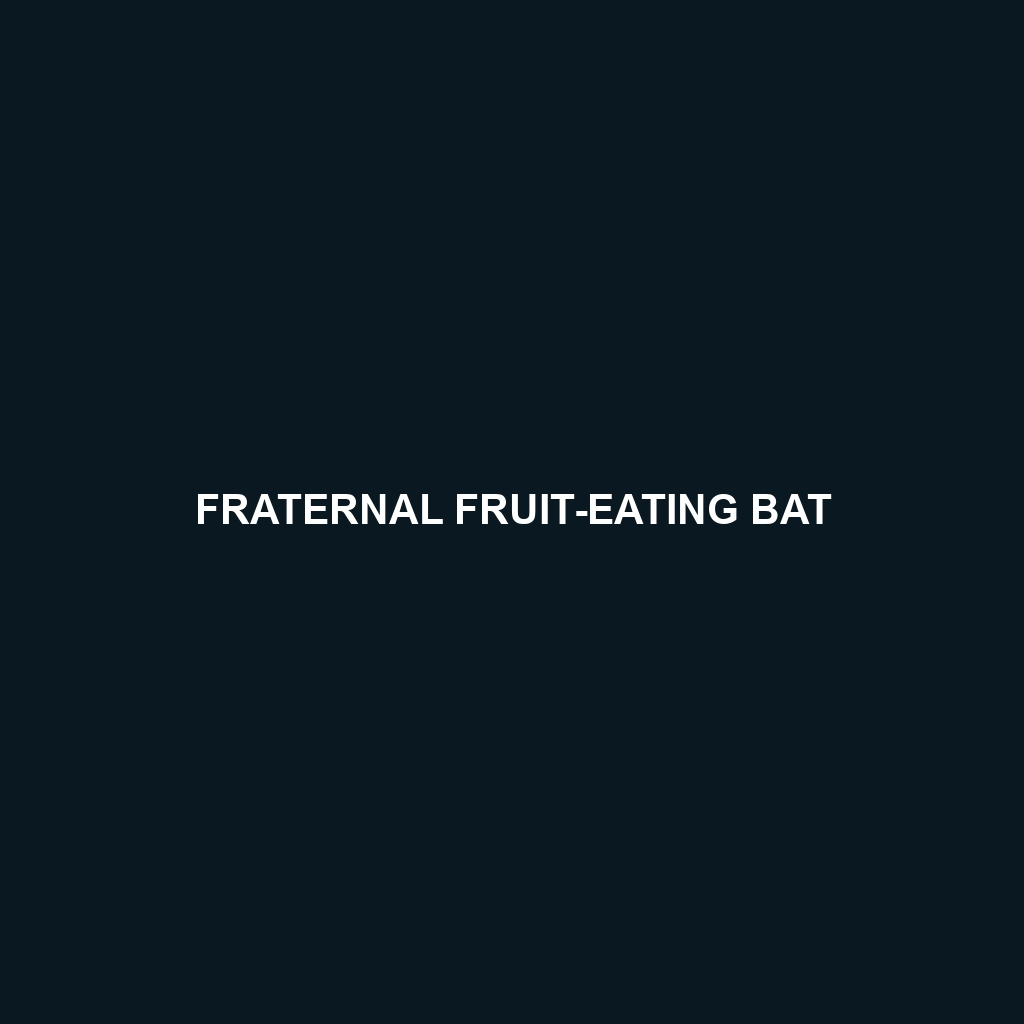Fringed Fruit-eating Bat
Common Name: Fringed Fruit-eating Bat
Scientific Name: Artibeus fimbriatus
Habitat
The Fringed Fruit-eating Bat is primarily found in tropical and subtropical regions of Central and South America. Its range includes countries such as Costa Rica, Panama, and parts of Brazil. This species prefers habitats such as rainforest canopies, secondary forests, and areas adjacent to swamps and wetlands, where it can easily access both fruit and water sources.
Physical Characteristics
The Fringed Fruit-eating Bat is a medium-sized bat with a wingspan of approximately 30 to 35 cm (12 to 14 inches). It is characterized by its dark brown to black fur, often appearing silky and well-groomed. One of its most distinctive features is the fringed edges of its ears, which can be up to 2 cm long, providing it with excellent hearing abilities. Its robust body is complemented by long, narrow wings, adapted for agile maneuvering through dense foliage.
Behavior
Fringed Fruit-eating Bats are primarily nocturnal creatures, becoming active at dusk to forage for food. They exhibit a social structure where they often roost in groups within tree hollows or dense foliage. These bats are known for their agility in flight, using echolocation to navigate and locate ripening fruits, which they prefer over other food sources. They are also observed to display various vocalizations as part of their social interactions.
Diet
The diet of the Fringed Fruit-eating Bat primarily consists of fruits, with a particular preference for figs, berries, and other soft fruits. Their feeding habits contribute positively to seed dispersal, benefiting the forest ecosystem. This species plays a vital role in maintaining plant diversity by aiding in the growth of trees through effective seed distribution.
Reproduction
Fringed Fruit-eating Bats have a breeding season that typically occurs between February and April. Females usually give birth to a single offspring after a gestation period of about 11 to 12 weeks. The young bats are initially dependent on their mothers for nourishment and protection but begin to explore their surroundings within a few weeks of birth. Maternal care is essential, as mothers communicate with their young through vocalizations.
Conservation Status
The Fringed Fruit-eating Bat is currently listed as *Near Threatened* by the International Union for Conservation of Nature (IUCN). Threats to its population include habitat destruction due to deforestation and urbanization. Conservation efforts are crucial to ensure the survival of this species, particularly in areas where logging and agricultural expansion are prevalent.
Interesting Facts
– The Fringed Fruit-eating Bat is known for its ability to consume and disperse seeds from large fruits, making it an important species for forest regeneration.
– These bats have a unique social behavior where they have been observed grooming each other, strengthening social bonds within their roosting communities.
Role in Ecosystem
As a frugivore, the Fringed Fruit-eating Bat plays a significant role in its ecosystem by promoting plant diversity through seed dispersal. This not only facilitates the growth of various plant species but also helps maintain the health of rainforests, which are vital for carbon storage and biodiversity. By interacting with other species, such as trees and other fruit-eating animals, these bats contribute to a balanced and thriving ecosystem.
